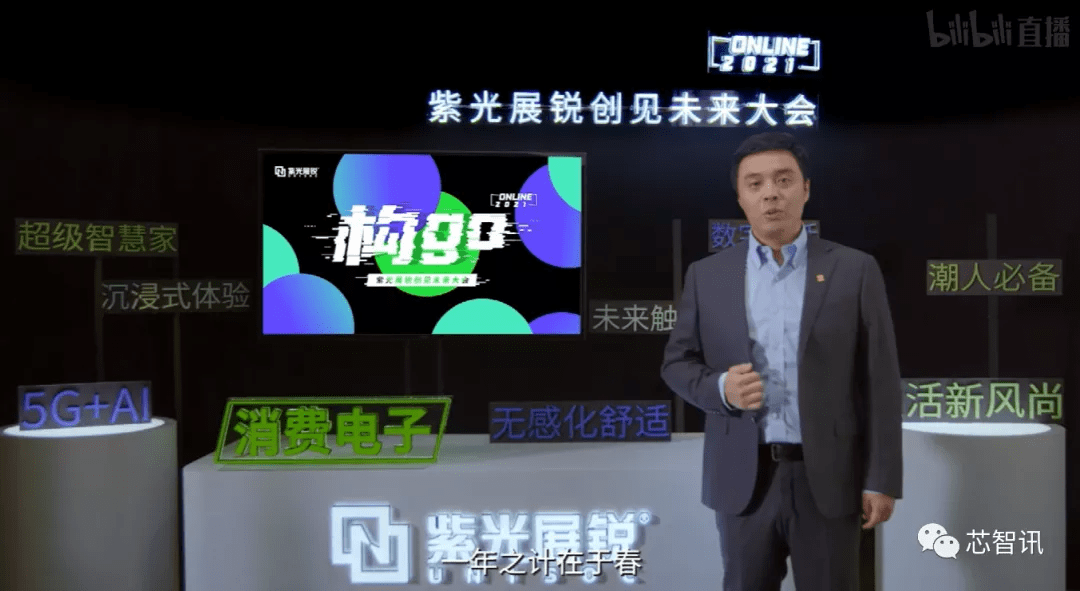
On April 20th, the domestic 5G chip manufacturer Ziguang Zhanrui held the 2021 Creative Future Conference with the theme of “GO” online. At this press conference, Zhan Rui reviewed the internal changes in the company in recent years and clarified its position as an “ecological carrier of the digital world”. At the same time, Zhan Rui also launched a new 5G brand-Tanggula, updated the layout of 5G products, and shared some achievements and corresponding layouts in the fields of consumer electronics and industrial Internet of Things.
Continue to focus on the 5G market, launch the new 5G brand “Tangula”
As early as in the 2G/3G era, there were originally more than a dozen mobile phone baseband chip suppliers on the market, but with each generation of technology upgrades, the technical challenges faced by baseband chip manufacturers are also increasing, requiring patent reserves and R&D. Investment is also rising linearly, and the threshold is getting higher and higher. If there is not enough shipment support, it will inevitably be unsustainable. Therefore, the upgrade of each generation of communication technology is accompanied by a major reshuffle of baseband chip players.
After Intel announced its withdrawal from the 5G mobile market in April 2019, there are only 5 global 5G mobile phone baseband chip players: Qualcomm, MediaTek, Huawei HiSilicon, Ziguang Zhanrui and Samsung. Although Apple has acquired Intel’s baseband chip business, Apple has yet to launch its self-developed 5G baseband chip.
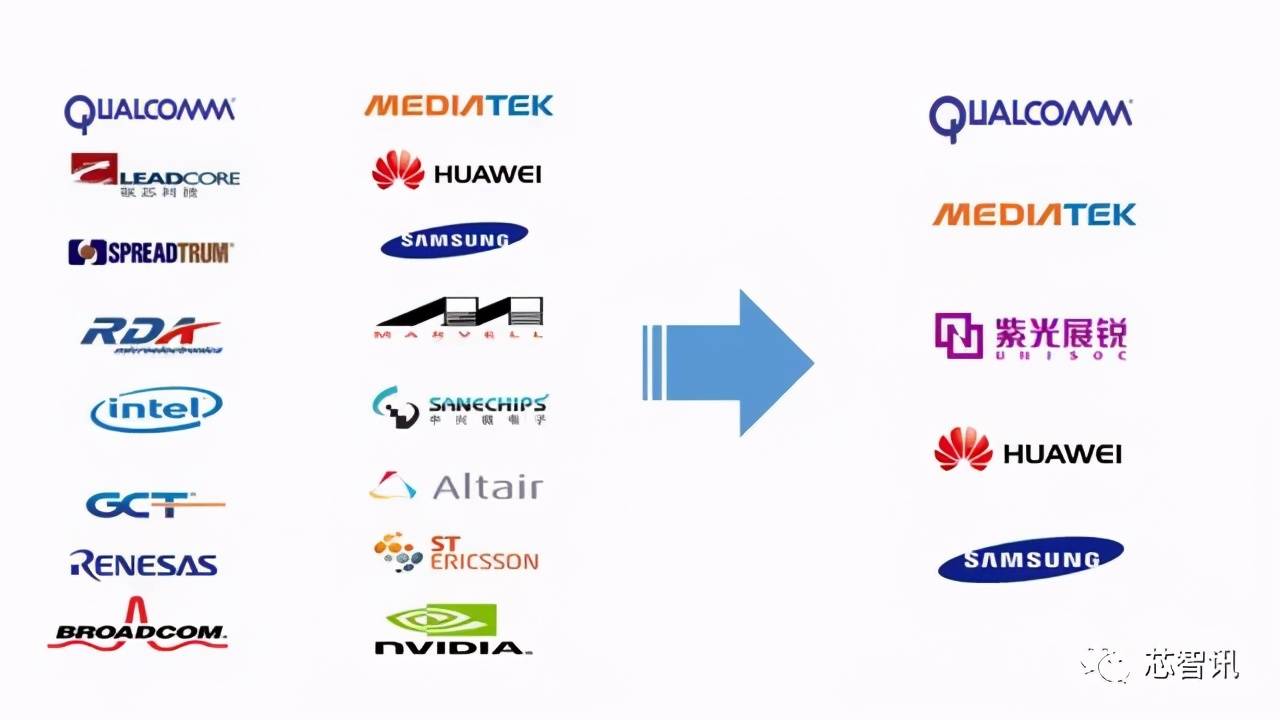
Among the five remaining 5G chip manufacturers, Huawei HiSilicon and Samsung’s 5G chips are basically for use in their own mobile phone products, and Huawei HiSilicon is currently unable to manufacture its self-developed chips due to US sanctions. In the current open market, the only 5G-based chip suppliers that many mobile phone manufacturers can choose are Qualcomm, Zhanrui and MediaTek.
Although Zhanrui’s 5G chips do have a certain gap compared with Qualcomm and MediaTek, in the past two years, Zhanrui has continued to catch up, and the gap is further narrowing.
At the MWC exhibition in February 2019, Zhan Rui released its 5G communication technology platform-“Makalu”, and the first 5G baseband chip based on the Makalu platform-Ivy V510, successfully entering the world’s first 5G echelon. The gap with the first-tier 5G chip manufacturers at that time was only about 6 months.
One year later (February 2020), the 5G mobile phone based on Zhanrui’s first-generation 5G chip, Hisense F50, was officially released. However, it needs to be pointed out that the Huben T7510 is not a 5G SoC chip, it is a combination of the previous Huben T710 plug-in Ivy V510. In the current 5G mobile phone chip market, whether it is Qualcomm or MediaTek, the main 5G mobile phone chips are already 5G SoC chips that integrate 5G basebands.
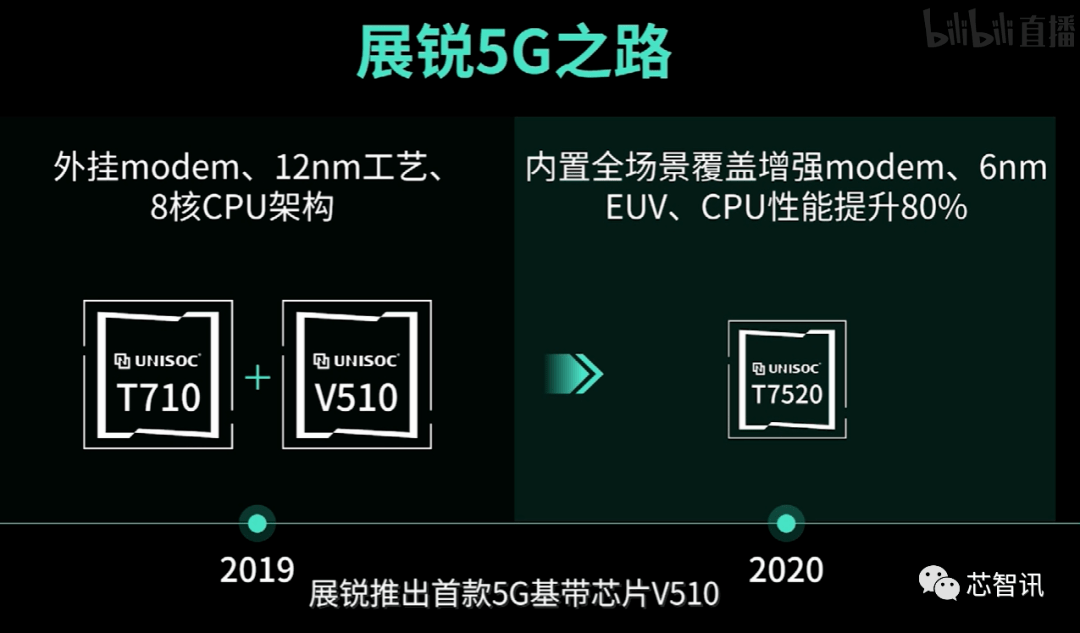
Therefore, at the same time as the release of the 5G mobile phone based on Huben T7510, Zhanrui also officially released its first 5G SoC chip with integrated 5G baseband-Huben T7520, which was also the first chip based on TSMC’s 6nm EUV process at the time, and it was in the overall The performance has also been significantly upgraded, and the gap with the rival’s flagship 5G chip has narrowed again, and some indicators have reached the same level or even higher. For example, MediaTek’s current flagship 5G chip, Dimensity 1200, is also TSMC’s 6nm EUV process. The AI computing power of its integrated APU 3.0 is about 4.5 TOPS, while the NPU computing power of Huben T7520 has reached 8 TOPS.
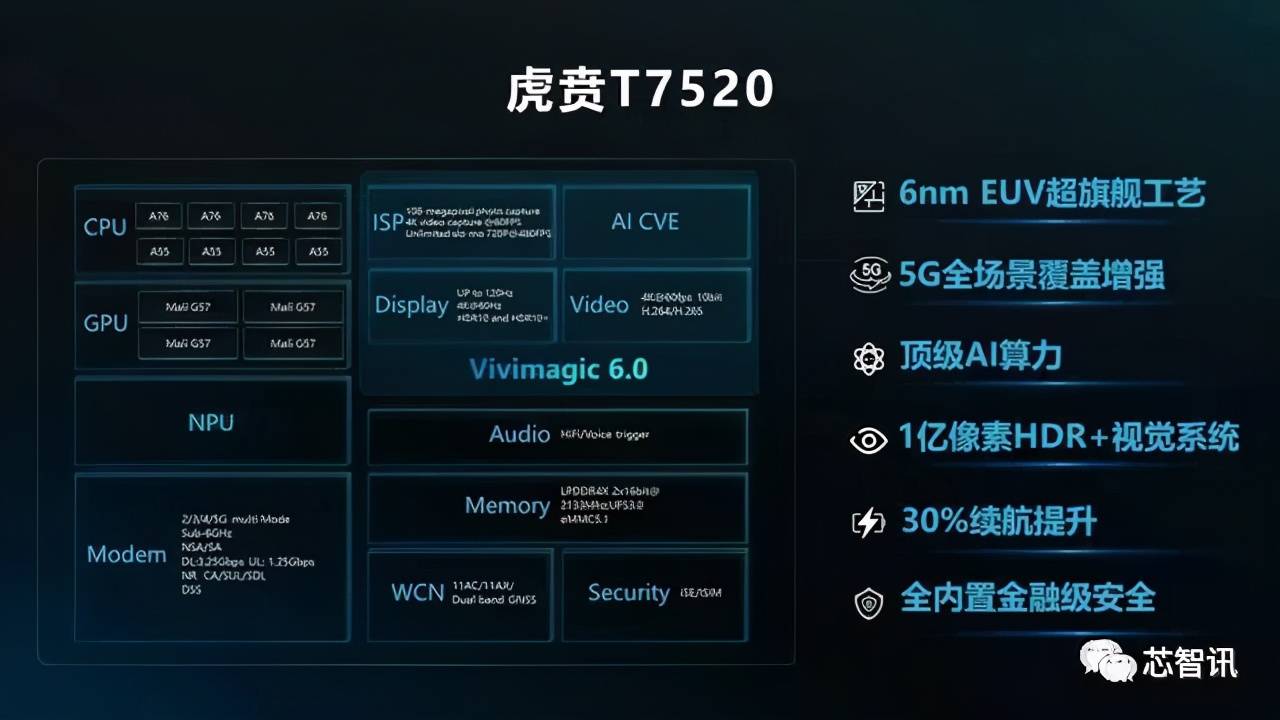
Ziguang Zhanrui executive vice president and general manager of the consumer electronics division Zhou Chen said that the T7520 released last year was the first to adopt TSMC’s 6nm process, with 12 billion transistors, and the overall performance has a significant leap. Have strong competitiveness.
In order to further accelerate the layout of 5G products and better develop the 5G market, at today’s press conference, Zhan Rui launched a new brand for the 5G product line-Tanggula.

△Zhou Chen, Executive Vice President of Ziguang Zhanrui, General Manager of Consumer Electronics Division
Zhou Chen said that Tanggula is the birthplace of the Yangtze River and has nurtured a brilliant civilization. Next to Tanggula is the Hoh West No Man’s Land, which means that Zhanrui 5G will face the no-man’s land and continue to develop forward. Zhanrui 5G will take this as a new starting point to make breakthroughs, nurture and promote thousands of industries, and enter a smarter era of the Internet of Everything. At the same time, new applications will be explored to open up oasis in no man’s land.

Under the Tanggula brand system, Zhanrui will also carry out a brand new product plan for its 5G mobile platform, which is divided into 6, 7, 8, 9 series. Among them, the 6 series is geared towards the inclusive mass market, the 7 series emphasizes product experience upgrades, the 8 series focuses on performance pioneers, and the 9 series represents cutting-edge technology. The original T7510 was renamed Zhanrui Tanggula T740, and T7520 was renamed Tanggula T770.
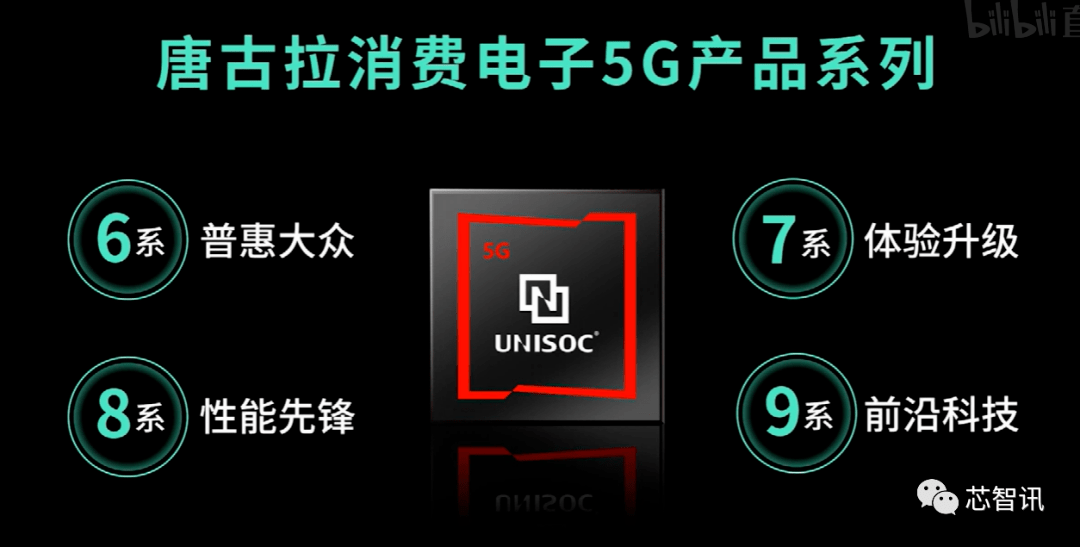
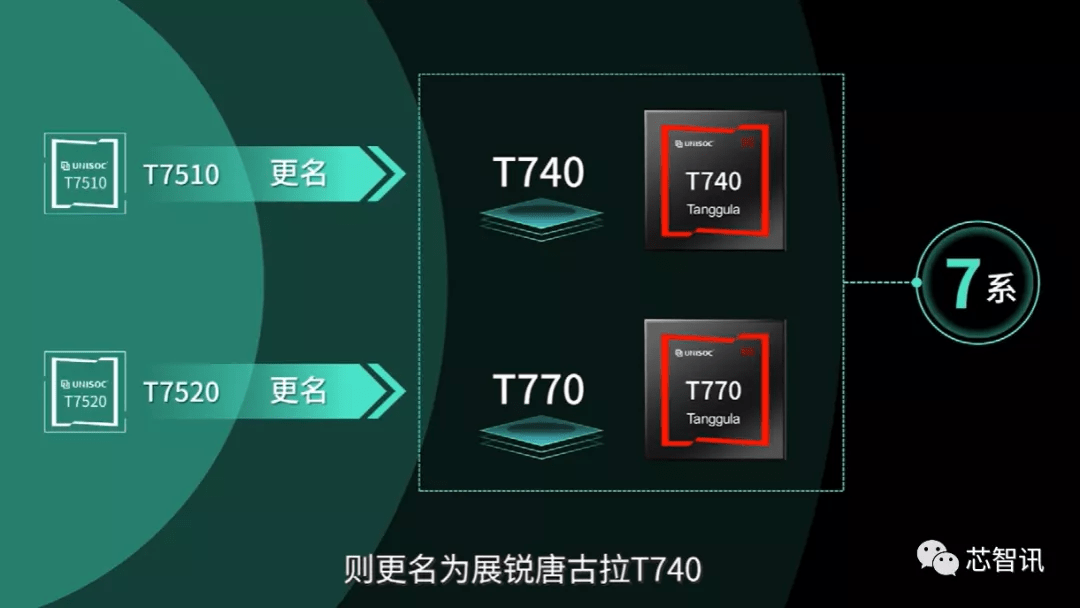
As early as 2018, Zhanrui sorted out its product line and officially released two new product line brands, “Huben” and “Ivy”. Among them, “Huben” is a brand of mobile communication chips, and “Ivy” is a brand of pan-connected chips.
So does the launch of the Tanggula brand mean that the previous Huben and Chunteng brands will give up? Regarding this issue, Zhou Chen told Xinzhixun that Tanggula is only a brand for 5G products, and Huben and Ivy will continue to exist. It seems that the Huben and Ivy brands can only exist in 4G products in the future.
5G chip shipments will break 10 million this year, and 4G chips will grow by 300%
In 2020, due to the impact of the new crown epidemic, the demand for entertainment at home, home office, online education, etc., benefited from the rapid control of the epidemic in China, and Zhan Rui has made corresponding product layouts in advance. In 2020, Zhan Rui’s various businesses will appear. Rapid growth.
At this press conference, according to the data released by Zhanrui, the shipment of Zhanrui’s tablet products in 2020 will increase by 100% year-on-year; the market share of feature phones in 2018 is 41.55%, and the market share in 2020 is as high as 76.92%, ranking first in the world. 1. Shipments of 4G feature phones increased by 1.5 times year-on-year; smartphone business revenue increased by more than 50%; smart children’s watch market share reached 60%, ranking first in the world; in the financial payment terminal market, Zhanrui chip shipments A year-on-year increase of nearly 400%, the market share in the field of smart POS has reached 80%.
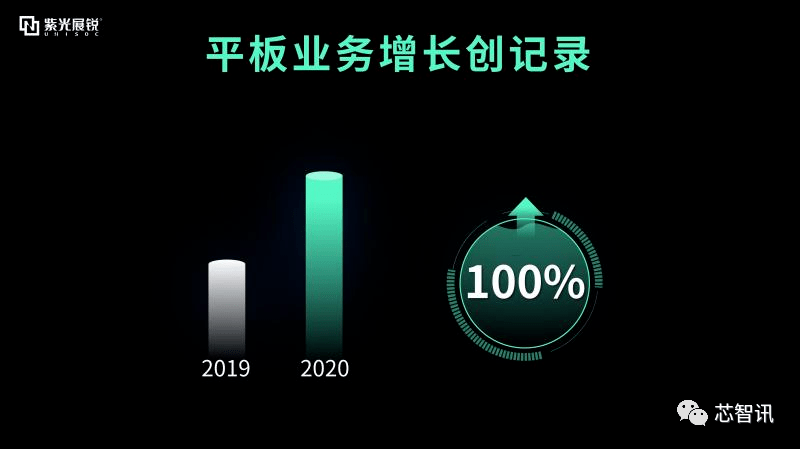
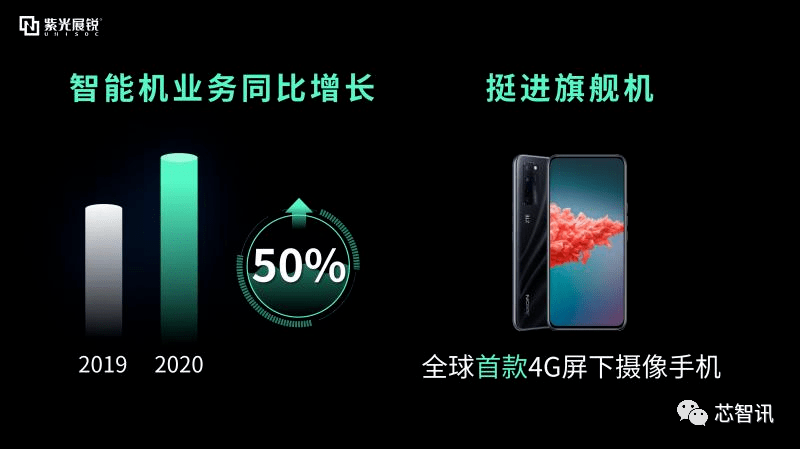
In terms of 5G mobile phones, in February last year, after the official release of Hisense F50, a 5G mobile phone based on Zhanrui’s first-generation 5G chip, many manufacturers (such as Coolpad, China Telecom, etc.) also launched corresponding 5G mobile phone products.
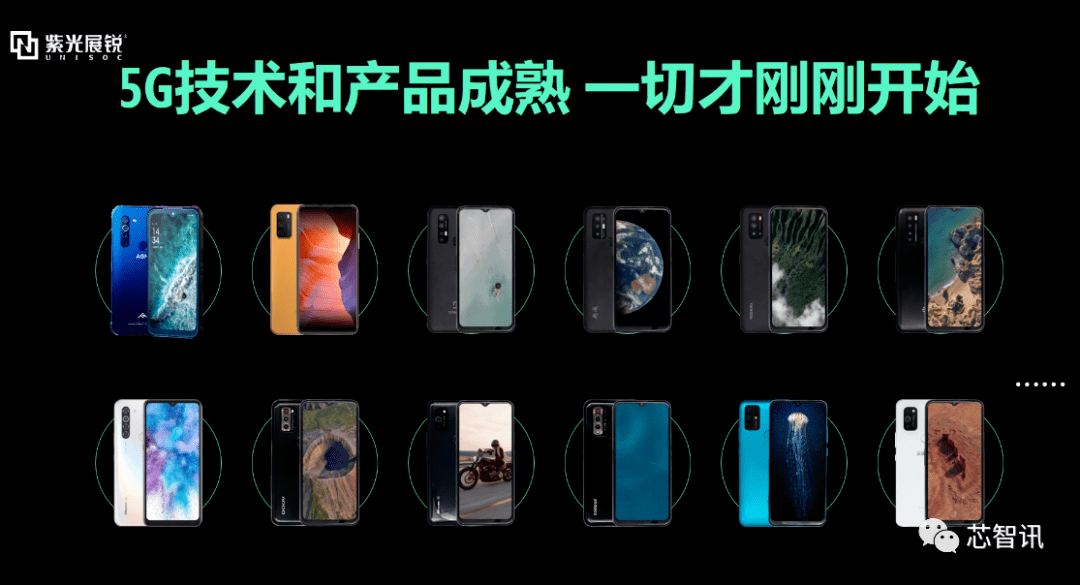
In terms of 5G industry applications, Zhanrui’s first-generation 5G chip 5G CPE equipment has also begun mass production and commercial use, and the head module manufacturers have also developed 5G modules based on Zhanrui’s 5G chips. Zhanrui’s 5G has gone overseas, and CPE products have been launched in Thailand.
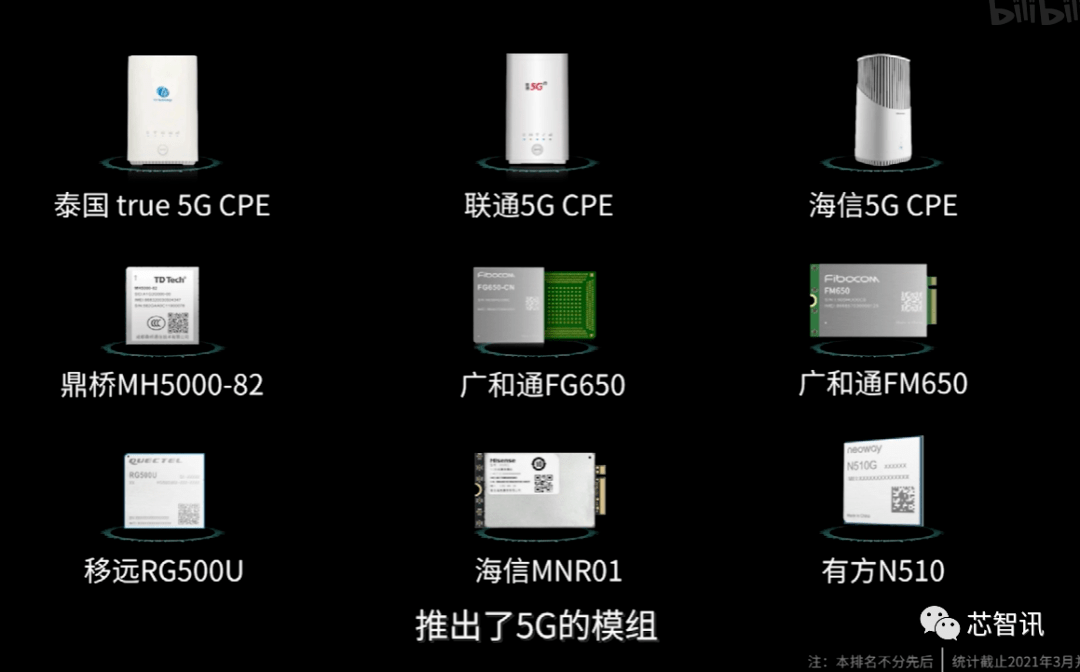
According to the data released by Zhanrui at the press conference, Zhanrui’s first-generation 5G chip shipments have exceeded one million sets so far, and the number of commercial terminal products has exceeded 100.
As for the progress of Zhanrui’s second-generation 5G chip Tanggula T770, according to Zhou Chen, the executive vice president of Ziguang Zhanrui, the chip has already returned in February this year and has begun to intensively conduct corresponding adjustments and optimizations. It is currently being implemented in customer projects. It is expected that a 5G mobile phone based on Tangula T770 will be launched in July.
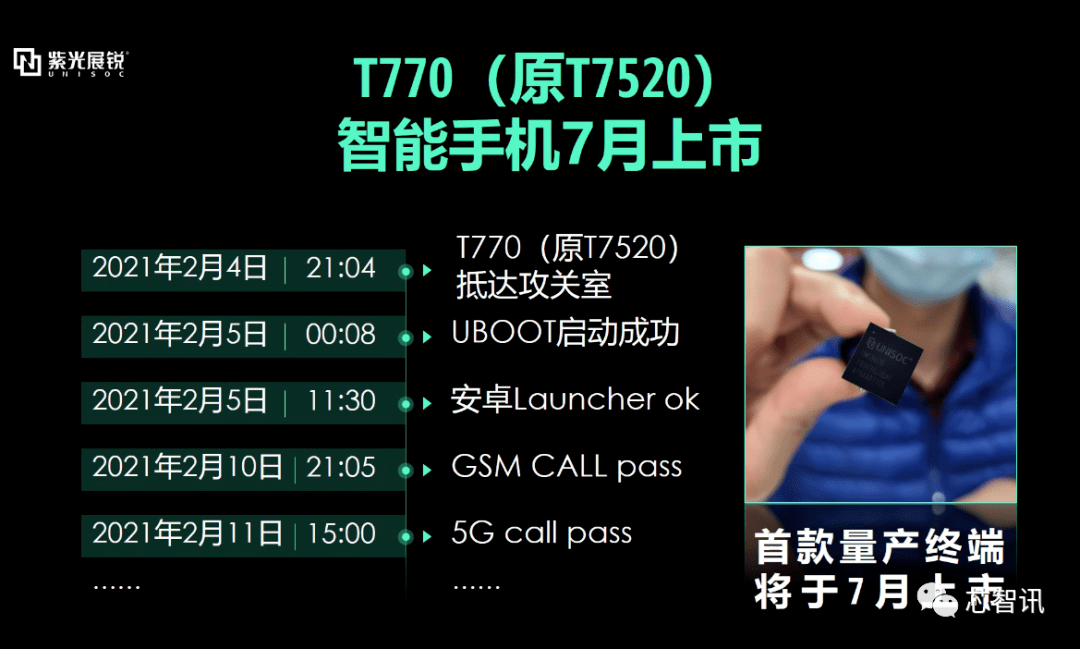
Regarding market expectations for this year, Zhou Chen said, “This year’s 5G chip shipments will break through the millions to tens of millions. I’m inconvenient to give specific numbers, but it’s definitely the tens of millions.
“Last year, Zhanrui’s customers as a whole have grown substantially. From a global perspective, there is a lot of room for growth in shipments in the low-end market. For example, in the 4G market, there were 1 billion 4G mobile phones shipped globally last year. The 4G market share was not very high before, so there is still a lot of room for growth. It is expected that this year there may be an increase of more than three times.” Zhou Chen added.
Cat.1/NB-IoT/5G multi-wire force, continue to develop the industrial Internet of Things market
In addition to the consumer market, the industrial Internet of Things market is also an important market that Zhan Rui has continued to develop in the past two years.
Since the official release of the domestic 5G license in June 2019, the construction and commercialization of domestic 5G networks has accelerated. At the same time, the clearing of 2G/3G networks and the migration to 4G/5G networks are also the general trend. However, with the closure of 2G and 3G networks, a large number of medium and low-speed network applications need to be switched to networks such as NB-IoT or Cat.1.
Against this background, in November 2019, Zhan Rui launched its first LTE Cat.1bis chip-Ivy 8910DM. It fills the gap in the cellular communication chip solution between the low-power narrowband Internet of Things and the traditional broadband Internet of Things. It can be widely used in scenarios such as sharing economy, financial payment, public network intercom, energy, and industrial control.
As the world’s first LTE Cat.1 bis IoT chip platform, Zhanrui Ivy 8910DM has quickly become the benchmark for medium-speed IoT chips with its advanced technical specifications and leading technology maturity since its release. In August 2020, Zhanrui Cat.1bis products exclusively won the bid for China Unicom’s Cat.1/1bis chip centralized comparison project, with a procurement scale of up to 5 million sets. While achieving great success in the market, in October 2020, Zhanrui won the lead of the Cat.1bis standard, turning a new page in Zhanrui’s history.
According to reports, Zhanrui 8910DM has accumulated tens of millions of shipments and the Cat.1 IoT chip market share exceeds 70%, ranking first in the country.
While Zhanrui 8910DM is recognized by the market, Zhanrui continues to promote the evolution of Cat.1 bis technology in order to better meet the key requirements of the current IoT application deployment and further expand the application scenarios. At today’s press conference, Zhan Rui announced a series of new Cat.1bis technical features: including eDRX/PSM features, coverage enhancement features, BT features, professional intercom, upgrade enhancements, overseas features, etc.
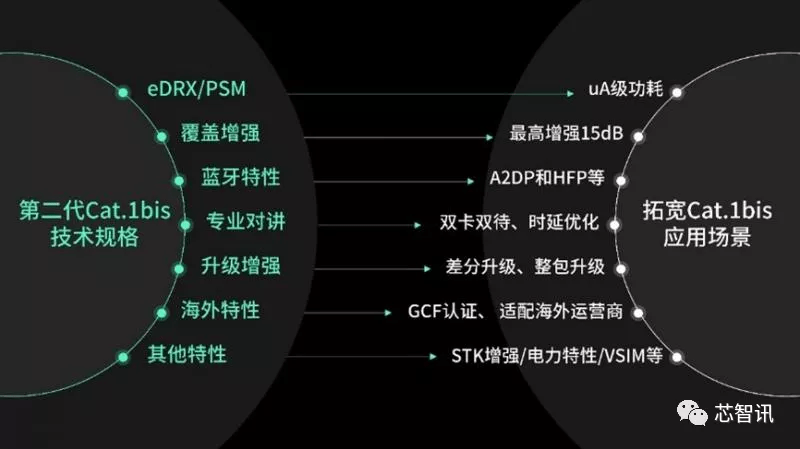
In addition, according to Huang Yuning, senior vice president of Zhanrui and general manager of the Industrial Electronics Division, Zhanrui will also creatively integrate advanced features such as R12 PSM, R13 eDRX, and R13 coverage enhancement with Cat.1bis technology this year. The ground empowers medium-speed IoT products to achieve an ideal user experience that requires low power consumption, low cost, wide coverage, and data rate.
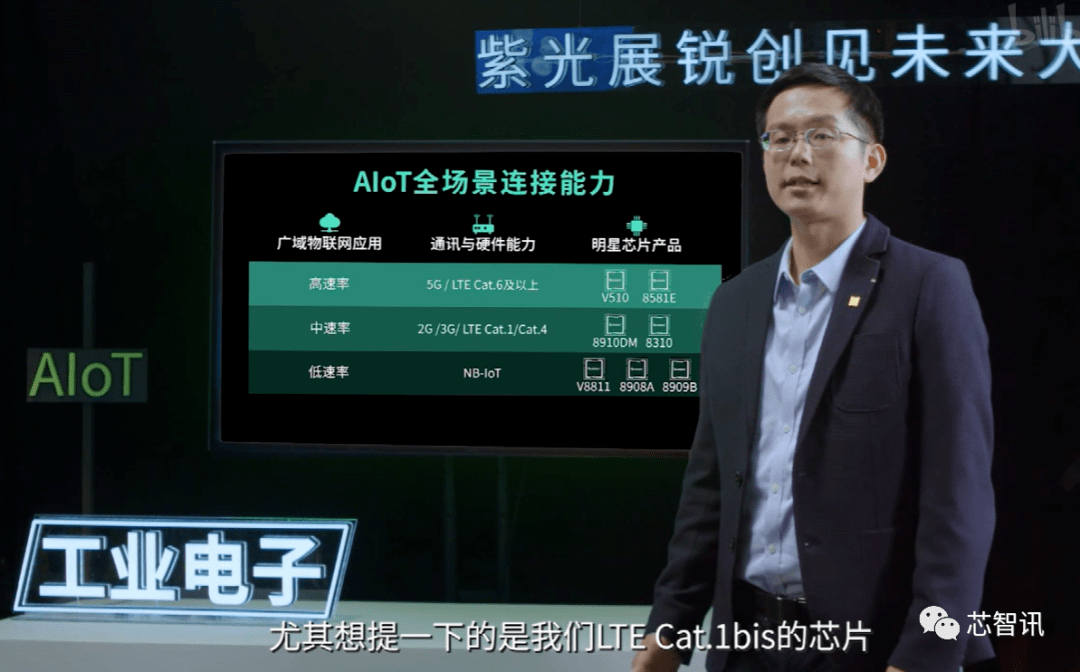
△Huang Yuning, Senior Vice President of Zhan Rui, General Manager of Industrial Electronics Division
In addition to continuing its efforts in Cat.1bis technology, Zhanrui will also launch LTE Cat.4 / Cat.7 products with more IoT features for the IoT market in the future. Huang Yuning revealed that it will make more improvements and enhancements at the protocol level for LTE Cat.4 downstream 150M and LTE Cat.7 upstream 100M capability levels, and continue to develop new technologies in the fields of AIoT, IWN, smart display, and automotive electronics. Launch new applications.
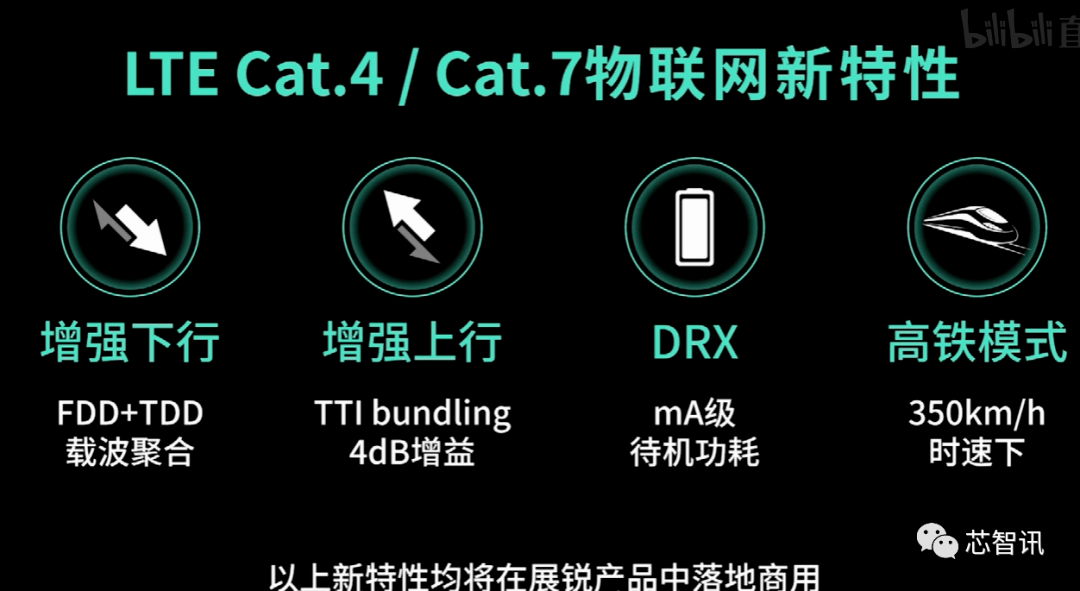
In early July 2020, as 3GPP announced the freezing of the R16 standard, it marked the formal completion of the first evolutionary version of 5G. At the same time, NB-IoT has also been officially included in the 5G standard.
In November 2020, Zhan Rui soon launched the 5G NB-IoT chip V8811 designed based on the R16 standard, which can coexist with the 5G NR network and access the 5G core network. At the same time, V8811 is the industry’s first NB-IoT chip that supports the national secret algorithm + PSA Level2, and it is also Zhanrui’s first industrial-grade 5G NB-IoT chip. The power consumption is also greatly optimized, and it can carry more 2G de-networking processes. New application scenarios in China require.
In addition, 5G’s high-speed, low-latency, and massive connection characteristics also determine that 5G is more suitable for many applications in the industrial Internet of Things. According to Huang Yuning, Zhanrui’s 5G solution has more than one hundred industry application cases in the field of industrial Internet of Things, enabling smart transformation in industries such as logistics, power, mining, transportation, and manufacturing. Among them is the cooperation between Zhan Rui and JD Logistics on the 5G smart logistics park and 5G smart unmanned warehouse projects.
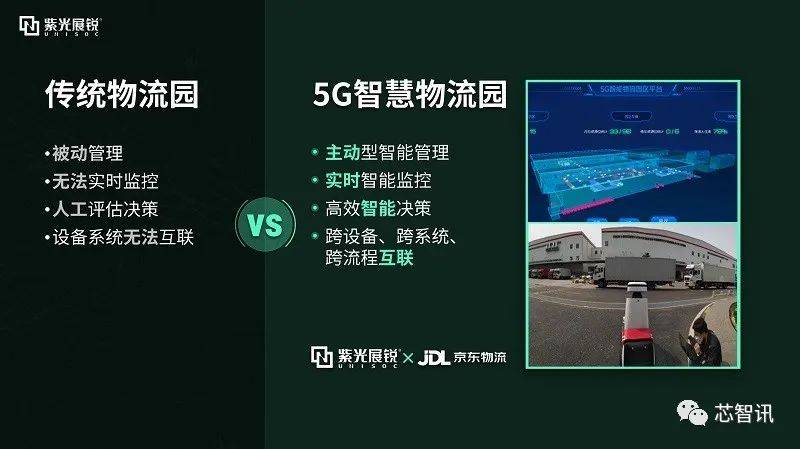
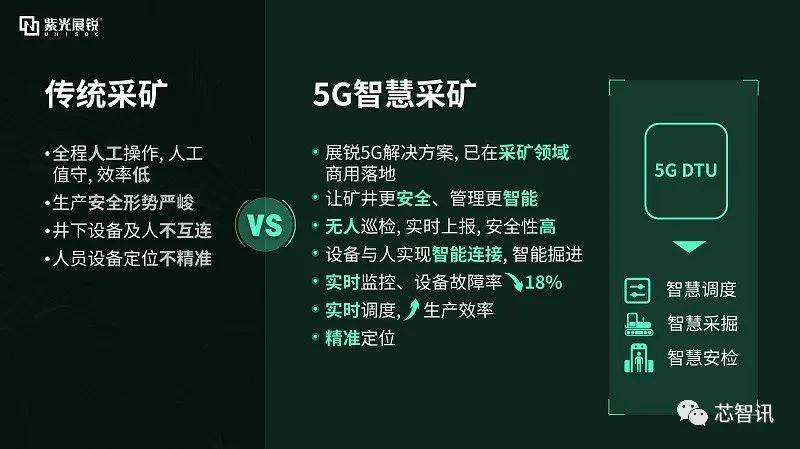
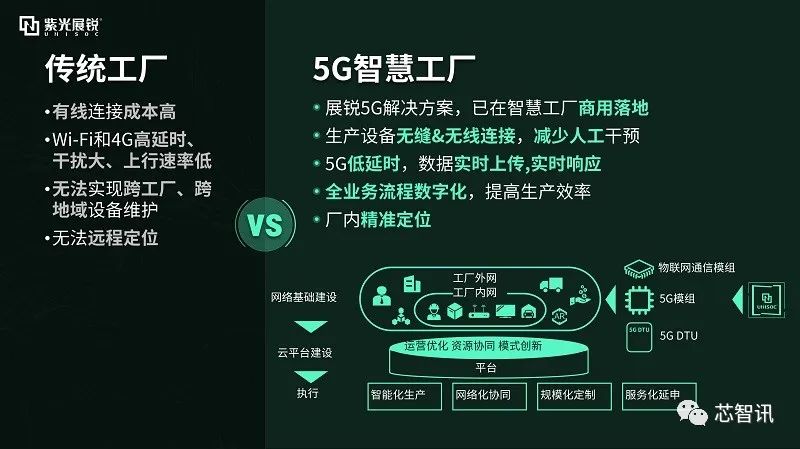
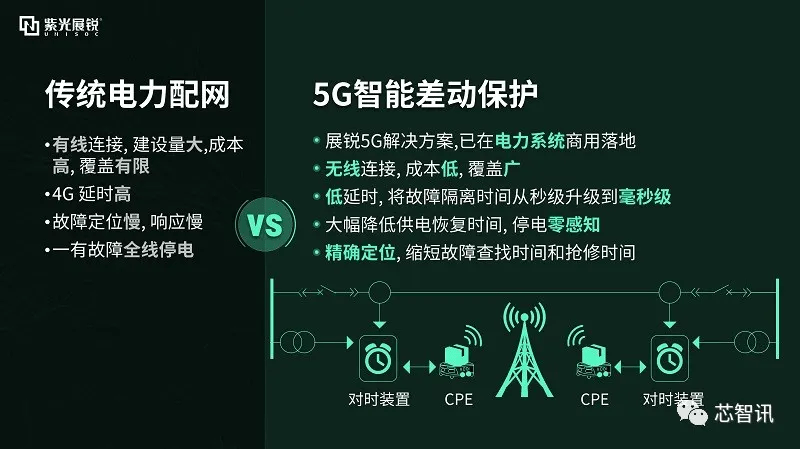
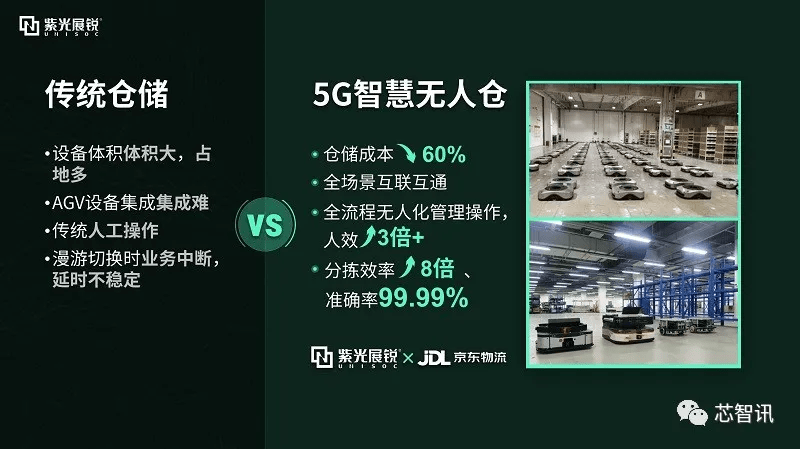
Huang Yuning said: “The number of Zhanrui’s 5G terminals has exceeded 100, most of which are used in the field of industrial Internet of Things, which will push thousands of industries into a more intelligent era of the Internet of Everything.”
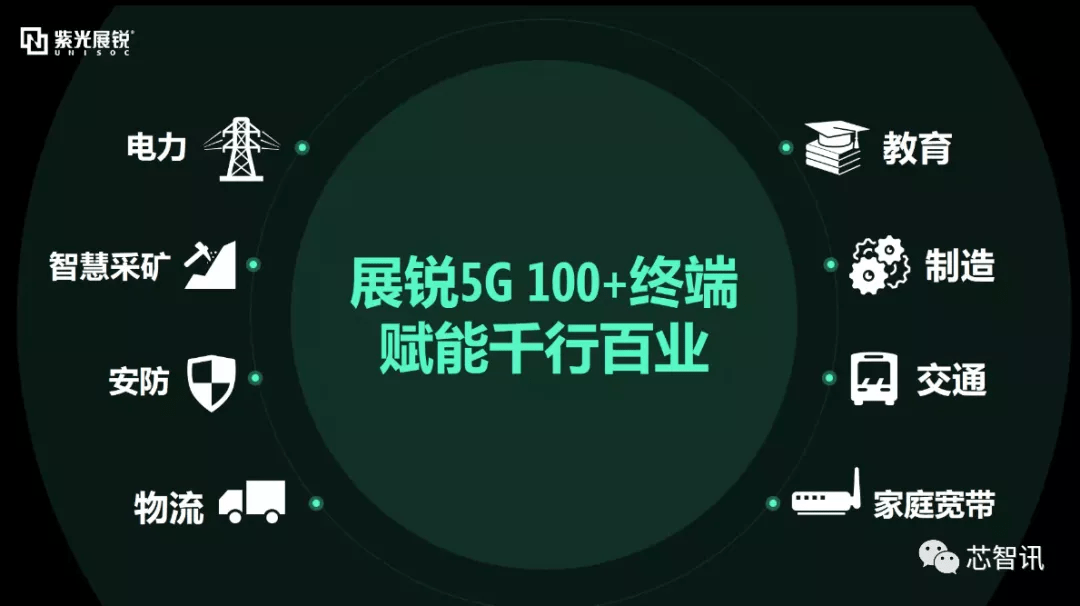
Layout the automotive electronics market
The new energy vehicle market has been very hot in the past two years. There are not only pioneers like Tesla, but also traditional car manufacturers and new car manufacturers such as Weilai and Xiaopeng. In addition, mobile phone manufacturers such as Xiaomi and Huawei have also ended up, even OPPO. And 360 was also revealed that it will enter the new energy vehicle market.
For new energy vehicles, the proportion of semiconductor devices is also quite high. This has also attracted the entry of many non-traditional automotive semiconductor chip manufacturers. For Zhan Rui, it is also actively deploying the automotive electronics market.
In November last year, Zhan Rui launched a more integrated eight-core SoC smart cockpit solution A7862, which integrates 2G/3G/4G cellular communication and Wi-Fi+BT/BLE+FM+GNSS and other complete communication capabilities. Realize the “always online” of smart in-vehicle applications. In addition, it also launched the first domestic automotive-grade dual-frequency high-precision positioning chip A2395, which can support GNSS dual-frequency multi-mode, L1+L5 dual-frequency positioning, and global mainstream positioning systems, which can provide centimeter-level high-precision positioning with comparable positioning accuracy. 10 times higher than single frequency products.
Zhou Chen told Xinzhixun that Zhanrui’s product layout in the field of automotive electronics will mainly focus on the three aspects of connection, smart cockpit, and autonomous driving.
In terms of connectivity, Zhanrui is currently one of only three 5G chip suppliers in the open market, which is also a major advantage for Zhanrui to enter the automotive electronics market.
In the smart cockpit, a very highly integrated SoC is required to meet the requirements of multimedia entertainment in the cockpit and multi-screen display on the dashboard. Zhanrui benefited from years of experience in R&D and large-scale shipment of smart phone chips. Good response.
In terms of autonomous driving chips, Zhanrui has strong AI research and development capabilities and self-developed NPU architecture. Zhou Chen revealed that in the future, Zhan Rui may launch higher-specification AI chips for the automotive market.
However, Zhou Chen also admitted that Zhanrui’s current chips are mainly for consumer-grade or industrial-grade chips, while automotive-grade chips have higher functional safety requirements, quality requirements, and ultra-long-term continuous supply requirements. , Need to pass the car-level certification. For Zhan Rui, there will be some challenges. However, Zhanrui has already had a layout since last year, and more car-level chips will be released in the future.
Join hands with Liangfengtai to open up the AR market
Although the AR/VR market quickly became cold after the explosion around 2015, the application of AR technology in the industry has gradually emerged in recent years. For example, in subdivisions such as machinery manufacturing, automobiles, energy, public safety, medical care, and education, AR has begun to achieve applications.
In Zhanrui’s view, with the global deployment of 5G, AR will be re-recognized as one of the core scenarios of 5G. At the same time, the epidemic has accelerated the rapid growth of the AR market.
In order to accelerate its deployment in the AR market, Zhan Rui has joined hands with domestic AR manufacturer Liangfengtai to effectively solve the long-standing technical pain points of AR glasses through innovative 5G+AI fusion technology-including long delays, poor human-computer interaction efficiency, and voice recognition The dynamic recognition of the human body is not clear and accurate, the effective perception of the environment is not obvious, the picture quality is not clear, etc., thereby enhancing the intelligent experience of the product.

According to reports, relying on Zhanrui’s 5G+AI technology can strengthen the combination of virtual and real AR and enhance the interactive experience. For example, Zhanrui’s 5G solution can bring low latency, high bandwidth, and high-speed capabilities to AR products, enabling AR products to achieve real-time and high-speed online interconnection; Zhanrui’s AI capabilities can perform spatial calculations more efficiently , To achieve spatial positioning, map construction, virtual and real combination and real-time occlusion, to achieve the space 6DOF ViSLAM positioning technology within centimeter level/1°. It also supports environment understanding to help users perceive the surrounding environment, identify and track targets, and use deep learning algorithms to detect, segment, and identify targets to help better improve the product’s intelligent experience.
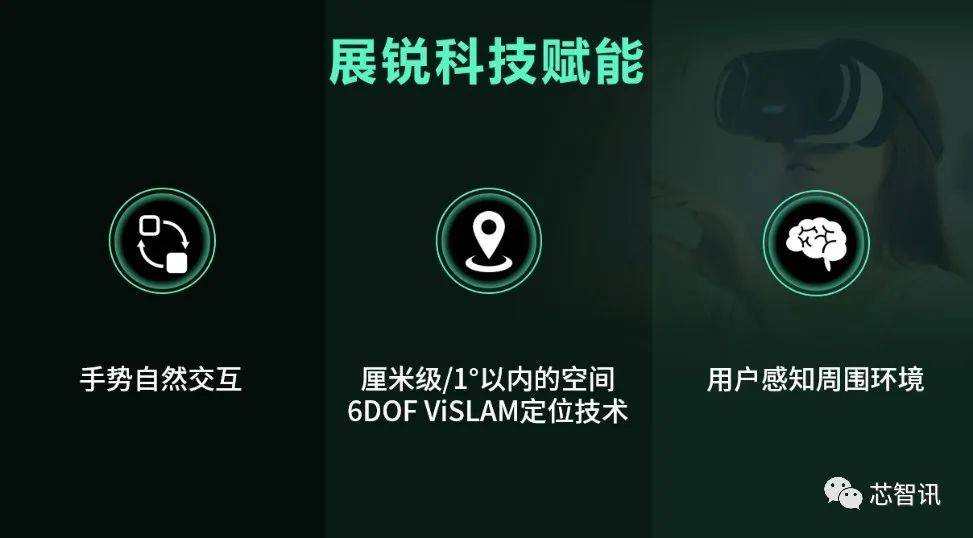
In addition, Zhanrui’s unique AI technology can support the use of AI algorithms to eliminate noise interference in multi-channel MIC scenarios, improve recognition, and make speech clearer and more accurate. At the same time, it supports accurate and reliable voice recognition, and supports 10+ command word recognition. Through the combination of AI technology and the end cloud, the voice recognition interactive experience is more intelligent.
Become an “ecological carrier of the digital world”
From the above introduction, we can clearly feel that in the past two years, Zhanrui has continuously and rapidly improved in terms of product line layout, product strength, market recognition, market share, etc. Zhanrui has achieved this compared to more than two years ago. “Transformation”!
The driving force behind Zhanrui’s “transformation” comes from the transformation of Zhanrui’s internal organizational structure, business system and management system.
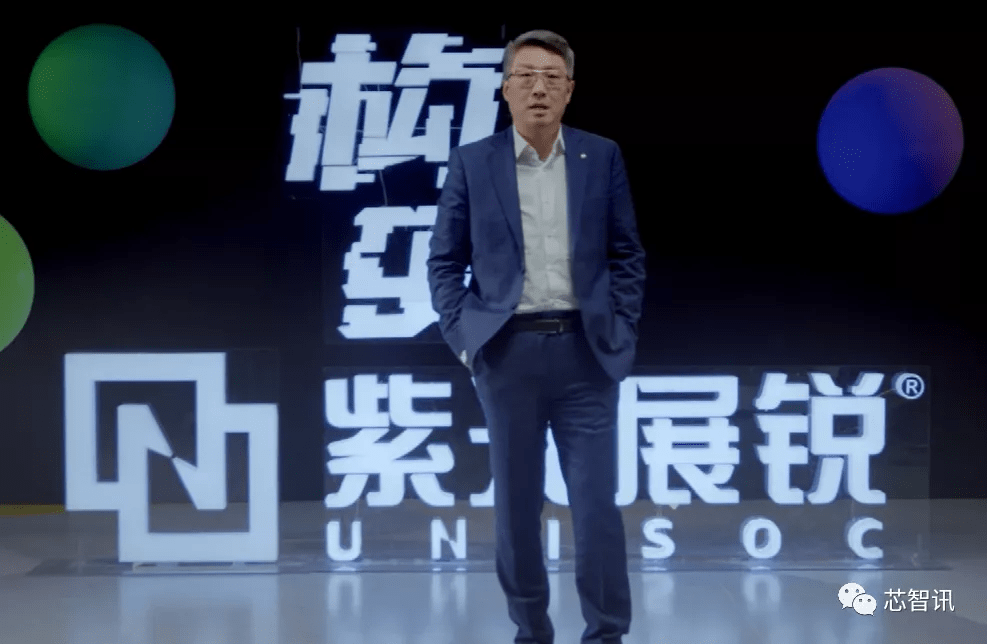
△Zhanrui CEO Chu Qing
Zhanrui CEO Chu Qing said in the opening dialogue of the press conference: “Before I joined Zhanrui, Zhanrui had experienced consecutive years of performance decline. At the same time, quality accidents occurred frequently. At the most exaggerated time, our biggest customer at that time had three lawsuits against us. Many customers are lost. When I took over Zhan Rui in 2018, the situation of the entire company was almost flattened, so I had to immediately reform Zhan Rui’s internal structure, business system and management system. ”
According to reports, after accepting Zhanrui in 2018, Chu Qing immediately started to establish a complete integrated product development process system (IPD) and CMMI quality management system within Zhanrui (this is the system originally used for software quality. It is introduced into the research and development of the entire chip and solution).
In Chu Qing’s view, “The introduction of IPD and CMMI has made the business of an enterprise mathematically modelled and everything can be predicted. It can make the process orderly and the execution more efficient. To propose new strategic goals, or layer by layer. Decompose and correctly decompose it into the business architecture to carry it.”
Here is an example. In April 2019, Zhan Rui released the world’s first quad-core LTE chip platform for smartphones based on the Arm DynamIQ architecture-Huben T310. In February before this, Hisense took the lead in getting samples of the T310, and the mass production time of the chip itself is planned for July 15. However, when Hisense and Zhanrui confirmed the Alpha-level cooperation, they put forward the challenging target of mass production of mobile phones on June 15 based on market demand, which means that it only takes 3 and a half months from getting samples to mass production of mobile phones.
At that time, Ziguang Zhanrui’s senior vice president of marketing, Zhou Chen, said in an interview with Xinzhixun: “If we put it in the past, the mass production of a new Zhanrui mobile phone chip from tape out to terminal mobile phone will often take longer than expected. It takes a long time to delay. The main reason why Huben T310 can be launched to the market so quickly is that since last year, Zhanrui has established a complete integrated product development process system (IPD) and a CMMI quality management system.”
In addition, in terms of Zhanrui’s internal talent management and innovation incentives, after Chu Qing joined, he vigorously encouraged technological innovation, introduced new talents, and boldly used young backbones. “To solve the problem of poor enterprise innovation, we must attach importance to talents and give young talents opportunities.” Chu Qing said.
According to reports, at the end of 2018, Zhanrui’s internal R&D personnel accounted for only 40% of the master’s degree, but now it has increased to 85%. At the same time, there are currently 6 post-80s in Zhanrui’s first-level management, and there are many post-90s in second-level management.
In addition, at this press conference, Chu Qing also announced that Zhan Rui will invest heavily in cutting-edge technology research, establish an advanced technology research institute, invest 250 people among 5,000 R&D personnel, and invest 5% of annual revenue for cutting-edge technology R&D.
“In the future, there will be many new species and many things that shine. At the same time, Zhanrui will also make breakthroughs in basic computing architecture, and then spread to all Zhanrui products. AI will also have breakthroughs and new technologies. There will be a new transcript.”
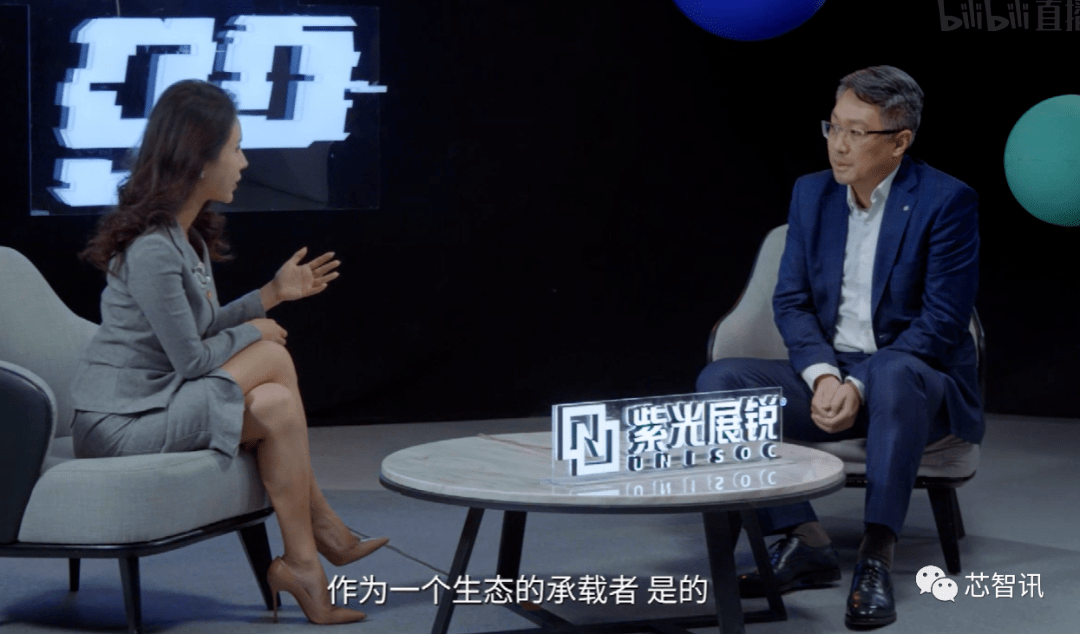
Regarding Zhanrui’s own positioning, Chu Qing said: “Ecology is the core of Zhanrui’s strategy. This ecology can be divided into two parts, one is to provide the “carrier” of the basic platform, and the other is to prosper on the carrier platform. Software, application and terminal companies. Only companies with the main chip platform capabilities can become ecological bearers. Such companies are scarce and cannot be copied. Zhan Rui is the only company in China that can bear large-scale ecological bearer responsibilities. Then Zhanrui should take the initiative to take the responsibility and be the bearer of the ecology.”
“As the ecological bearer of the digital world, Zhanrui has identified and clarified its own industrial responsibility: to do a good job in the ecological’soil’, on the one hand, it must provide advanced technology for the industry, on the other hand, it must help the industry to expand new space and enter Provide support for new business.” Chu Qing further explained.
Author: core MI – Rogue Sword




























































You must log in to post a comment.